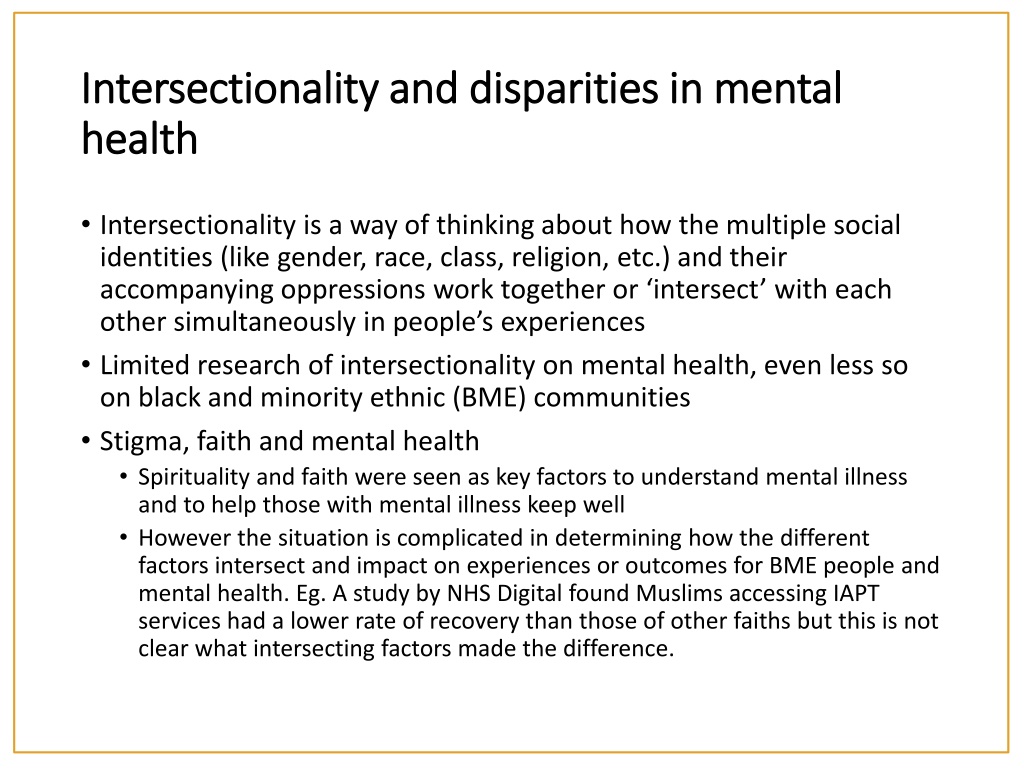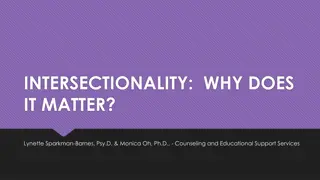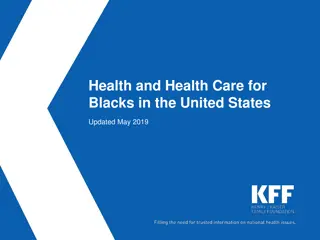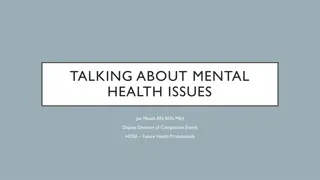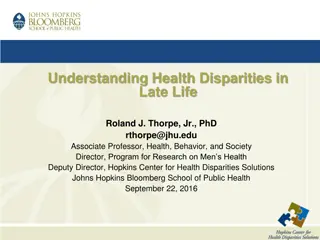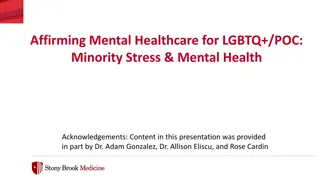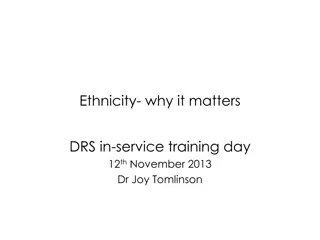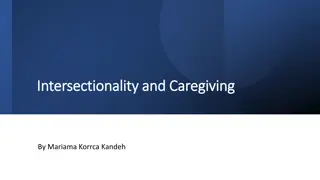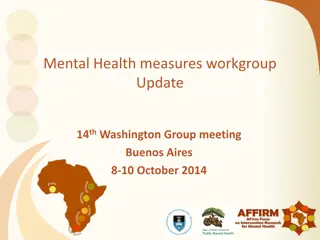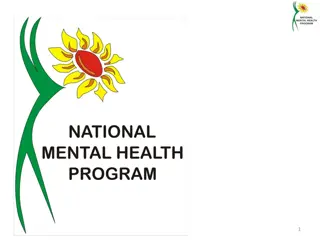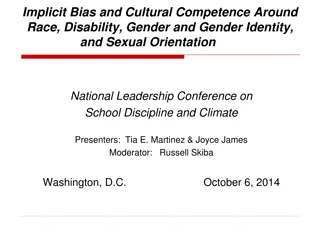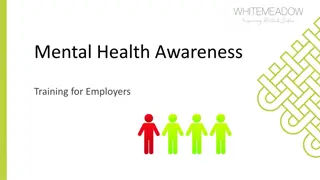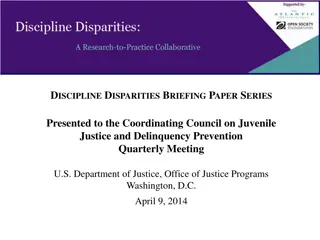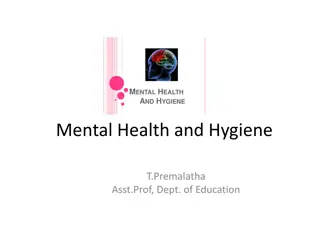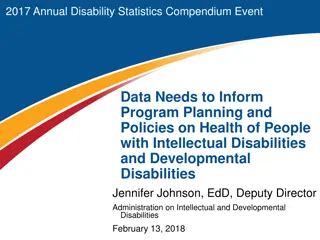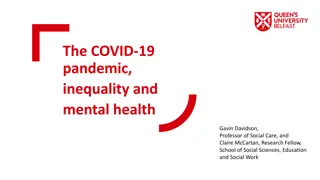Intersectionality and Disparities in Mental Health: Understanding the Complex Interplay
Intersectionality, with its focus on the interconnected nature of social identities and oppressions, plays a critical role in mental health disparities, especially among Black and Minority Ethnic communities. Factors such as stigma, faith, gender, race, and migration intersect to influence mental health outcomes. Limited research exists on how these factors impact various populations, emphasizing the need for improved data collection and interventions to address racial and intersectional disparities in mental health.
Download Presentation

Please find below an Image/Link to download the presentation.
The content on the website is provided AS IS for your information and personal use only. It may not be sold, licensed, or shared on other websites without obtaining consent from the author. Download presentation by click this link. If you encounter any issues during the download, it is possible that the publisher has removed the file from their server.
E N D
Presentation Transcript
Intersectionality and disparities in mental Intersectionality and disparities in mental health health Intersectionality is a way of thinking about how the multiple social identities (like gender, race, class, religion, etc.) and their accompanying oppressions work together or intersect with each other simultaneously in people s experiences Limited research of intersectionality on mental health, even less so on black and minority ethnic (BME) communities Stigma, faith and mental health Spirituality and faith were seen as key factors to understand mental illness and to help those with mental illness keep well However the situation is complicated in determining how the different factors intersect and impact on experiences or outcomes for BME people and mental health. Eg. A study by NHS Digital found Muslims accessing IAPT services had a lower rate of recovery than those of other faiths but this is not clear what intersecting factors made the difference.
Gender, race and migration Chinese women at greater risk of poor mental health as they age because of the intersectionality of gender, race and migration as well as combined forms of structural inequality (migration, social and linguistic isolation and financial insecurity). Sexual orientation, race and mental health Evidence suggests that Lesbian, Gay, Bisexual and Transgender (LGBT) people are at higher risk of common mental health disorders, marginalisation and issues related to coming out The recent Stonewall survey founds rates of depression to be high amongst LGBT people surveyed and much higher for those who had experienced a hate crime based on their sexual orientation. BME LGBT people were amongst those most likely to have higher rates of depression and eating disorders (Stonewall, 2018).
Sexual orientation, race and mental health Key indicators such as education, migrant status, age, were associated with poor mental health for gay and bisexual men. Black and Asian bisexual men still had higher risk of depression and of suicide attempts than their white counterparts Recent review on local action to address inequalities had limited evidence of intersectionality of ethnicity for bisexual and lesbian women (PHE 2018). However, one study has highlighted the impact of minority stress on black bisexual women s mental health. Some evidence on the Transgender community and mental health suggests a high use of mental health services but is extremely limited in exploration of race, Transgender and mental health.
Summary Limited data It is not always clear which intersectional factor made the difference in mental health experiences Better collation and monitoring of data to help analyse and address intersectionality and racial disparities in mental health More research is needed to understand the impact of different of intersectional factors on mental health, how they intersect and what interventions can be developed
